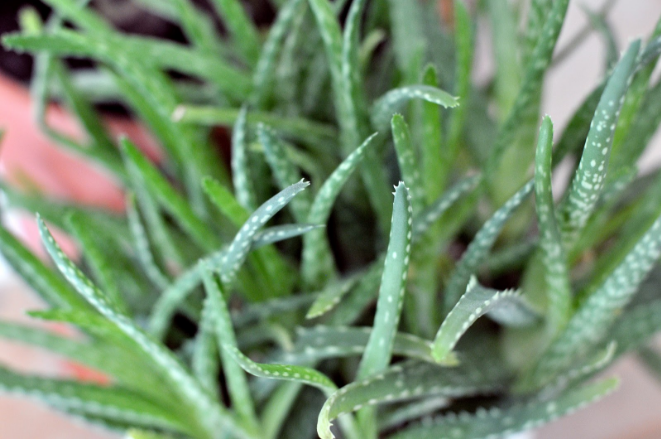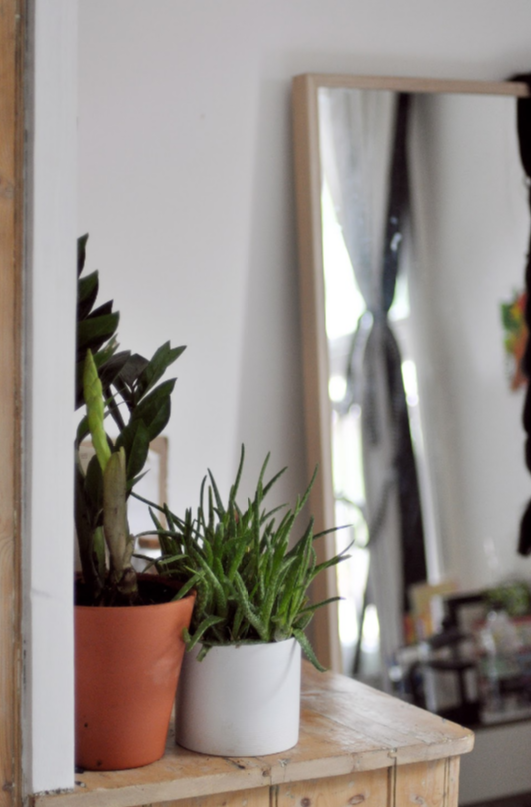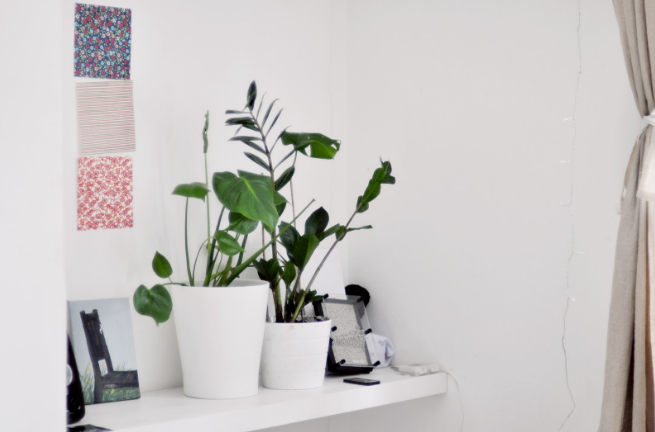
My grandma takes a huge amount of pride in her garden. As a child, my younger sister, cousin, and I would spend our summer holidays in her house while our parents enjoyed a well deserved break. So many of my childhood memories are in my grandma’s beautiful garden, sitting on the white plastic lawn chairs, our legs swinging off the edge not yet tall enough to touch the ground with our jelly sandals and Kickers shoes.
The grass in my grandma’s garden was (and still is) always green, unmarked, and consistent in length and texture. The borders are planted with low flowering blossoms, graduating out into taller bushes and trees at the back. Ivy and climbing trails mask the brick wall separating her garden from the train tracks, and little pebbled stones mark the path to a shed. She had an apple and a pear tree, now replaced with small Japanese Maples bringing bright reds and purples into the view.

I close my eyes and I can still see it, hear the sounds of bees and the rumble of the Greater Anglia services carrying commuters to and from town. Inside her house, succulents took over small pots that the three of us would decorate at ‘paint-your-own’ cafes, and bring the garden indoors for rainier days.
My love for plants and gardening stems undeniably from my grandma’s home and the care she took of it. While as a child I didn’t understand why anyone would enjoy bending over viciously digging out weeds and repotting plants in all weather, growing up I’ve learnt to experience myself the pleasure and pride my grandma takes in caring for all the things that grow in her home.
I’ve filled my own place with plants, and dedicate a huge amount of time to (sometimes desperately) helping them and my garden flourish and grow. I’ve learnt what will and won’t destroy them, and what properties particular plants have that might improve my day-to-day life. My Sundays are spent watering the garden, the house plants, and using what grows as a resource – for lavender pillows for friends and family, chillies and herbs for cooking, and blossoms for decoration indoors.

Where ASOS and River Island were once my favourite online shopping sites, now hunts on eBay for a new cactus or palm that can survive low-light corners of my home take up space in my browsing history (and credit card bills). One of my most treasured memories from this past year has been visiting the garden centre with my grandma. The two of us were engrossed in which bedding flowers to choose for summer, whether this year called for Begonias, Fuchsias, or Marigolds, and letting her pick out the best chilli plants for me to try out.
I genuinely believe that caring for something living and helping it flourish in my home keeps me happy
Beyond the obvious use of swiss cheese plants and footstool palms for excellent selfies and Instagram-ready room shots, I genuinely believe that caring for something living and helping it flourish in my home keeps me happy. Here are some tips I’ve gathered over the past year:
Aloe vera is actually a gift from god
Aloe veras are beautiful succulents and thrive on very little care. They’re an incredible plant, and can be bought at most imported food shops, on eBay, or in IKEA (for about £2 – it’s mad). As well as looking beautiful, Aloe veras are wonderful plants to have in the bedroom, as they produce oxygen overnight, refreshing the air around you as you sleep. As well as this, the gel that can be squeezed from mature leaves can be used to treat sunburn, irritated skin, or just to seal in moisture after a bath.
Repot your houseplants
By the time a house plant is mature enough to be on sale, and look good enough for you to buy it, chances are it’s outgrown the pot it was seeded in. Repotting a plant can prevent it from becoming rootbound and dying. Rootbound plants have “eaten” all the soil inside the pot, forming circular and overlapping root patterns. This means the plant will eventually suffocate itself even if it is repotted into more soil.
The best way to prevent this from happening is to hold the root-ball under running water until the dead soil washes away and roots start to detangle under the water pressure. If the roots still don’t detangle, I try to chop through any overlapping or knotted roots and pull them gently away from one another. So long as you don’t destroy too much of the plant’s root system, when you repot this into new soil and a bigger pot, it’ll allow the plant to take advantage of the extra space and soil, growing outwards rather than within its own tangle.

Stop watering your plants
Most houseplants die from overwatering; always Google your plant to see what they prefer. For instance: most palms like to be kept in moist soil; succulents tend to prefer dry soil; but for the most part, watering a plant with either a light mist from a spray bottle every other day, or full watering once every two weeks should keep your plant happy and healthy. If you overwater your plants, the roots sitting in wet soil will have no chance to dry out, and will rot so the plant can’t absorb nutrients from the soil. It’ll die a sad droopy death. Stop smothering them with your love basically.
Polish leaves
Houseplants don’t have the luxury of wind and rain keeping their leaves clean. Dust can quickly settle on leaves (especially on popular houseplants like swiss cheese plants or ZZ plants with big flat leaves), and prevent the plant from properly absorbing what little sunlight they get indoors. The same way you clean your house, clean your plants. Running a damp cloth over leaves to take dust off when it settles will keep the plant alive longer, and help it survive indoors.








